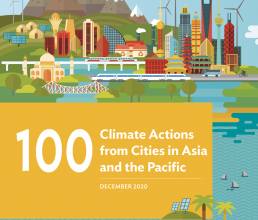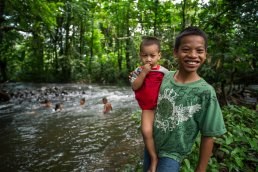First appeared in

Asian Development Bank
100 Climate Actions from Cities in Asia and the Pacific
The Federated States of Micronesia are investing in solar micro-grids and battery energy storage systems as well as capacity building to increase self-sufficiency and reduce emissions.
The Federated States of Micronesia are investing in solar micro-grids and battery energy storage systems as well as capacity building to increase self-sufficiency and reduce emissions.
On the island of Kosrae, 1.15 megawatt (MW) of grid-connected solar photovoltaic capacity is being installed as well as solar-diesel hybrid mini grid and rooftop solar systems for homes. On Yap, another pristine island on the other side of Micronesia’s territory, they are planning to install a 1.95 MW ground-mounted photovoltaic solar system together with a battery storage system. The program will also support capacity building with the utility company on the largest island Pohnpei.
30%
OF DEMAND WILL BE MET THROUGH RENEWABLE ENERGY
OF DEMAND WILL BE MET THROUGH RENEWABLE ENERGY
The expansion and further integration of renewables on the islands builds on the experience of the recently completed Yap Renewable Energy Development Project to further decrease Yap’s reliance on diesel for power generation and reduce greenhouse gas emissions from the islands. In the first year of the project it is expected that renewable energy generation will make up about 30% of demand for Kosrae and Yap, in line with national targets.
The $15.51 million project was made possible with a $15 million grant from the ADB and $0.51 million governmental co-financing.

Children enjoying the spring in Pohnpei, where the utility company’s long-term viability and ability to deliver reliable services will be improved (photo by ADB)
The Challenge
Imported diesel is the main fuel on the Federated State of Micronesia, accounting for about 80% of power generation on Yap and 95% on Kosrae.
Co-Benefits
Economic The increased renewable energy capacity will help to reduce the dependence on imported and expensive fossil fuels.
Social The provision of social services, such as health and education, is expected to improve on Yap and Kosrae through a more consistent power supply.

